Discover Georgian London with this handy guide – the era’s history and where to find the best examples of Georgian architecture in London today.
Words by John Rogers
The Georgian era began in 1714 with the accession of George I to the British throne and ushered in an era of unprecedented growth. London was already Europe’s largest city and the capital of an ever-growing empire.
And the remnants of London’s heyday can still be seen across the capital – from its buildings to its history.
Ready to go hunting for some of the best examples of Georgian architecture that still stand in London today?
What Was London Like in the Georgian Era?
Georgian London was filled with evolution – new buildings rose with the development of the Horse Guards Parade, the Royal Mews at Charing Cross, a new library at St. James’s Palace for Queen Caroline, and Westminster Bridge.
A Time of Growth
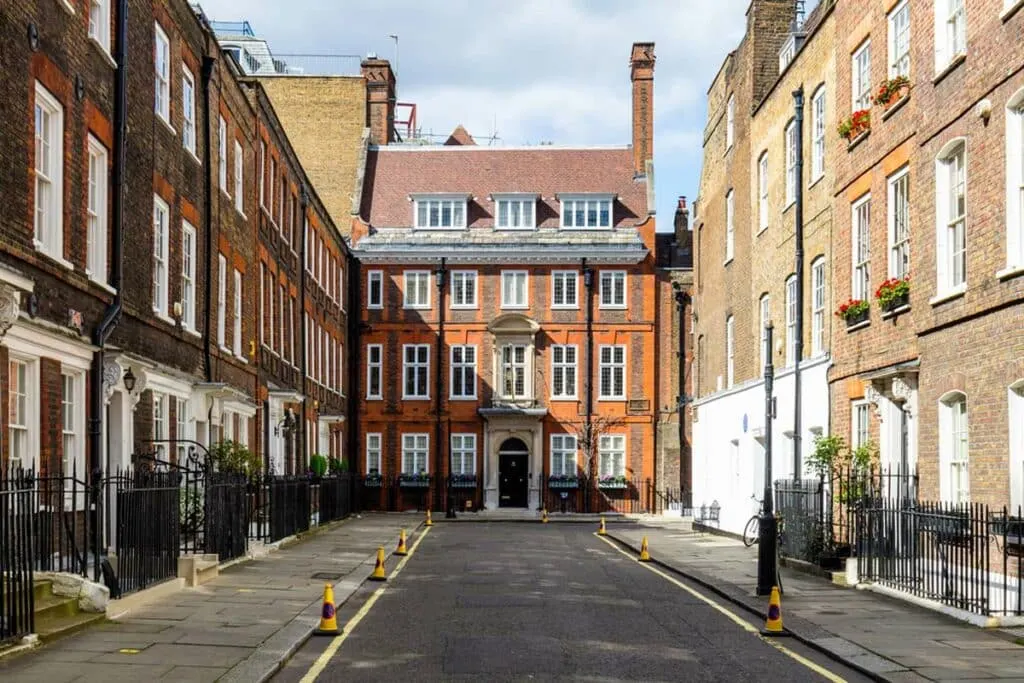
Meanwhile, London was growing to become the industrial centre of Europe, following the import of Huguenot silk weavers in the late 17th Century and the trading capital of the world.
However, while the city’s population grew to exceed 500,000 in the 1740s, the city still covered only 10,000 acres.
New general hospitals were founded between 1720 and 1745, including Guy’s and Moorfields, while bridges began to spring up across the Thames, relieving the pressure on poor old London Bridge, making sure it wouldn’t fall down again.
Growing wealth in London contributed to growth in the arts and philosophy. At the same time, the Treaty of Paris of 1763 that ended the Seven Years’ War left Britain as the World’s foremost colonial power and ushered in the Golden Age under George III.
This period of prosperity lasted until 1793, when the French Revolution began.
Georgian vs Victorian Architecture
At first glance, there is little difference between Georgian and Victorian architecture. However, little tell-tale signs help you quickly delineate buildings from the two eras once you identify them.
10 Downing Street
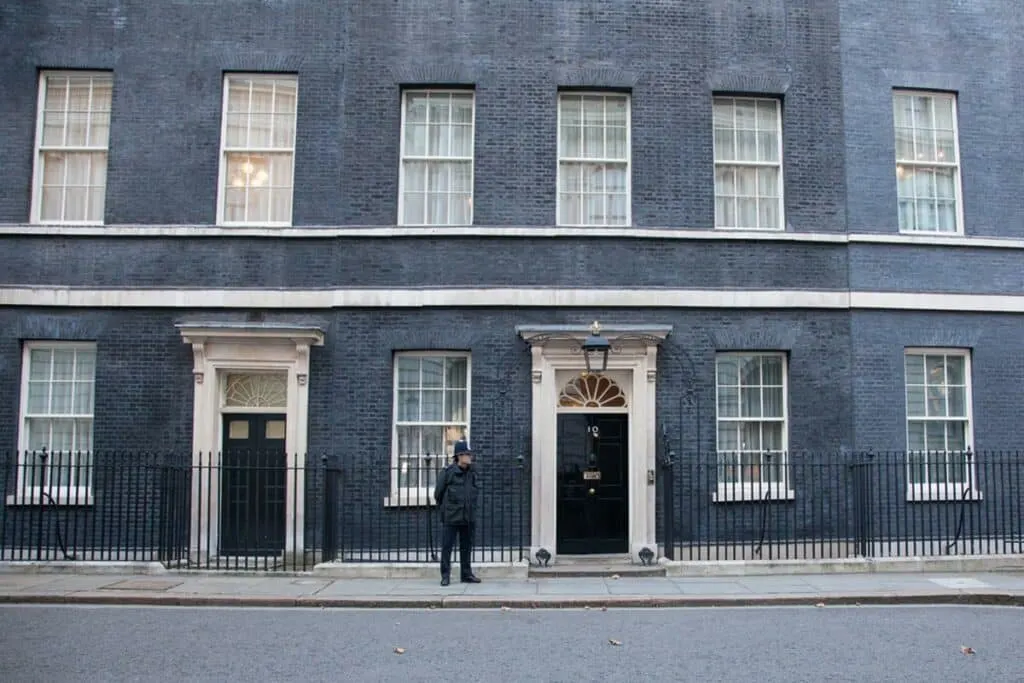
One of London’s most famous buildings, 10 Downing Street, is a perfect example of Georgian architecture, despite being built a century earlier, with many features that we take for granted, synonymous with the Georgian era.
The semi-circular fanlight above the famous black door is typical of the time, as are the arched lantern holders tower over the front steps.
Meanwhile, the cast iron railings guarding Downing Street are standard Georgian architecture. Indeed, iron railings with moulded leaves and flower heads are usually Georgian.
Georgian buildings often embraced the Palladian style, inspired by the Romans, while private dwellings commonly used pulley-operated boxed-in sash windows.
Symmetry was another critical feature of Georgian architecture, as were the metal shoe scrapers that lay at the entrance of buildings.
Victorian Architecture
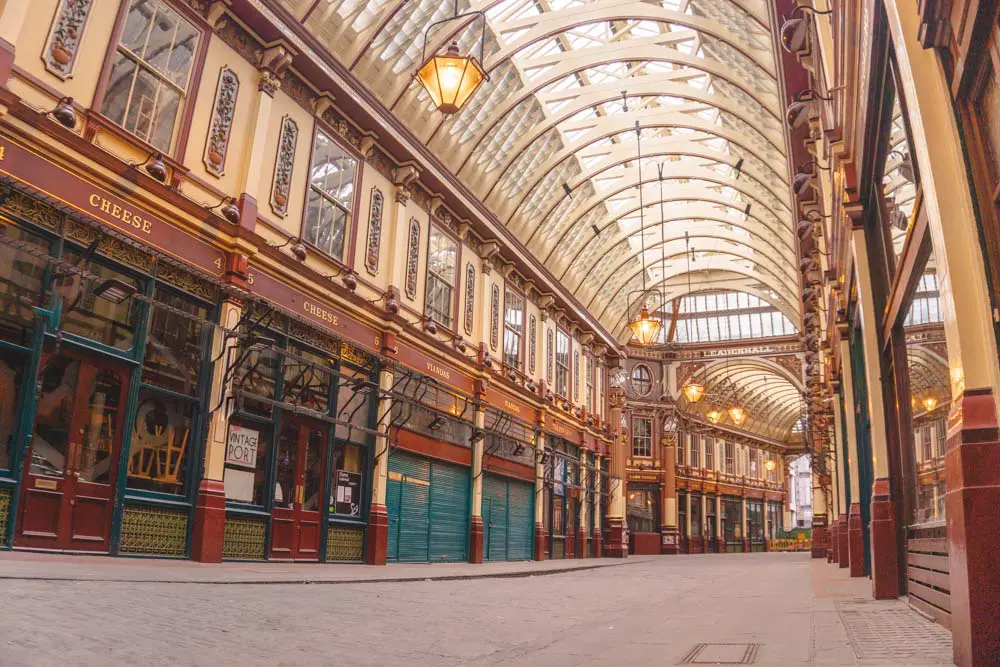
Victorian architecture saw the development of houses generally bigger than those of the Georgian era, with larger bricks providing a distinctly different look.
Similarly, technical advances in glazing led to larger panes being used for sash windows, while increasingly extravagant porches became de-rigeur during the reign of Queen Victoria.
So, now we know how to identify Georgian architecture from its more extroverted Victorian sibling, where can you find some of the best examples in London?
Famous Architecture from Georgian London
Dennis Severs’ House
Spitalfields
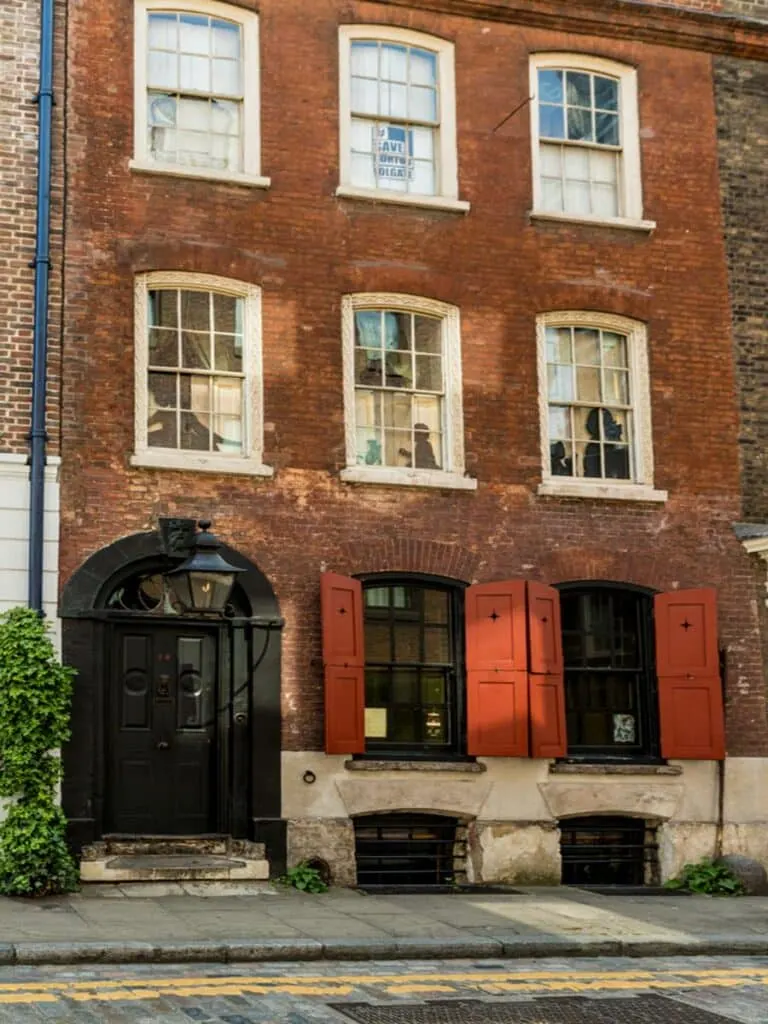
Dennis Severs’ House is a prime example of Georgian architecture in the heart of the City of London’s famous Spitalfields area.
Now a museum that pays homage to the life of the Jervis family, a set of 18th-Century Huguenot silk weavers, the house was built in 1724 and displays several tell-tale signs of the Georgian era.
A gas lantern appears to hover in mid-air above the single step up to the front door, and the arched fanlight sits above the doorway, just as it does in Downing Street.
The museum is a sparkling step back in time with its immersive theatre alongside still-life drama, and the building is an excellent example of a simple Georgian terraced house.
Burlington Arcade
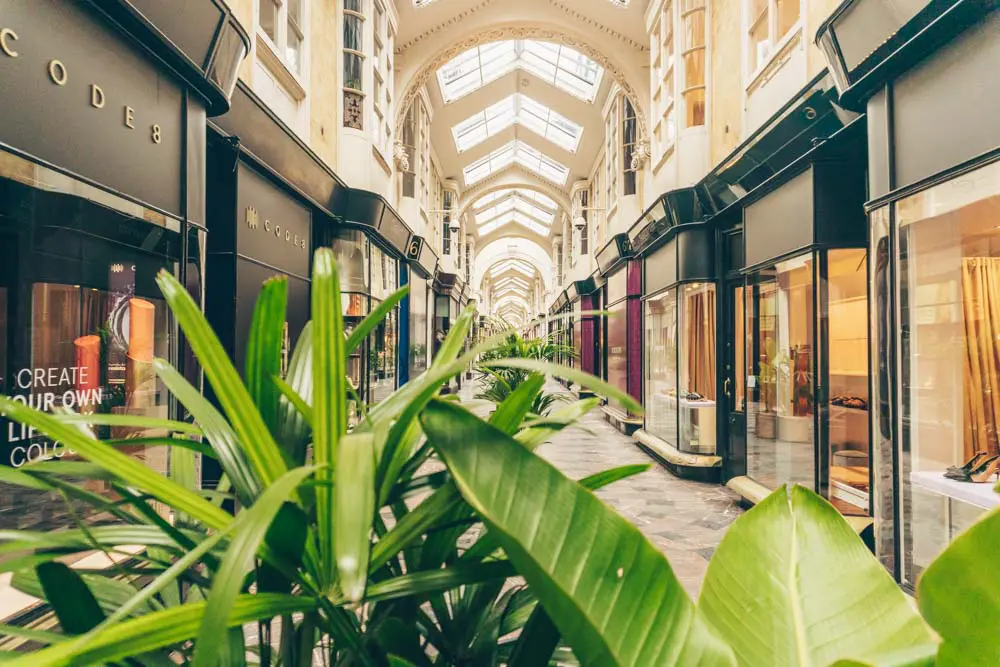
The stunning covered precinct on the north side of Piccadilly was built on the order of the Duke of Burlington, owner of next door Burling House. The Duke created the arcade to discourage locals from fly-tipping their rubbish over the walls into the grounds of Burling House.
The original arcade contained 72 boutique shops selling upmarket fashion, perfumes, and jewellery, and a lot has stayed the same since it was completed in 1819.
As well as showing off the distinctive late-Georgian commercial architecture, which remains discernable from later Victorian versions, the arcade is still policed by the world’s oldest and smallest private police force, the Burlington Beadles.
Do not hustle, do not bustle, do not hurry, and do not whistle! If you break these rules, expect the long arm of the law to feel your collar!
Little Green Street
Gospel Oak
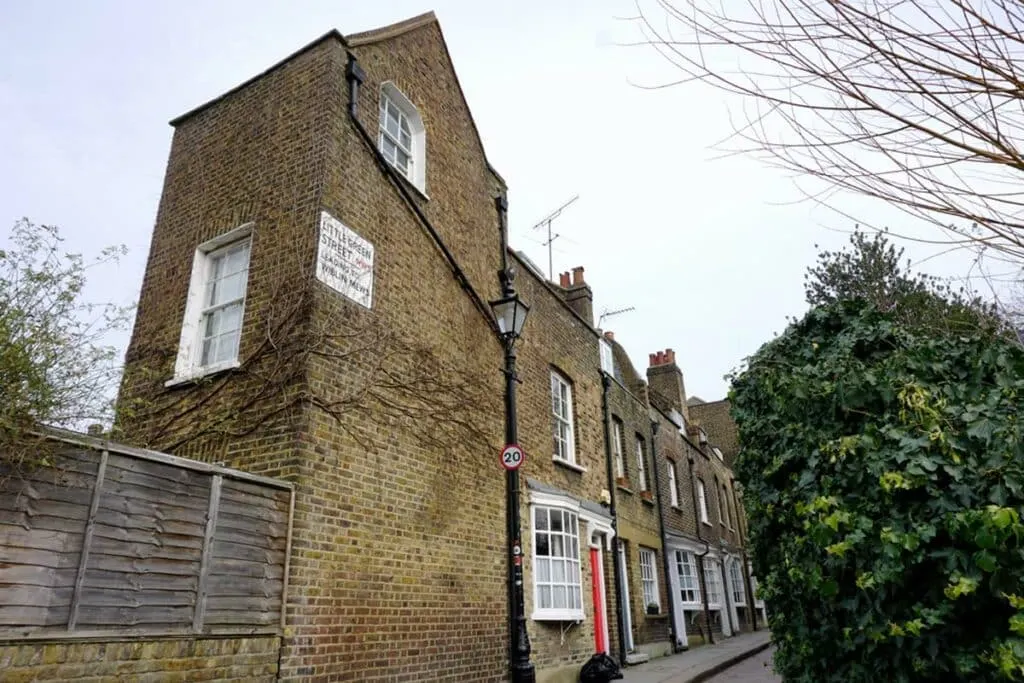
Walk under the railway bridge on Highgate Road, a short walk from Gospel Oak station, and turn left. You suddenly find yourself on a beautifully preserved row of Georgian cottages, complete with a cobbled roadway.
This set of cottages dates back to the 1780s and shows off the bow-fronted windows on the ground floor of each building, a clue to their previous lives as local shops serving the residents of Kentish Town and Tufnell Park.
Records show that ribbons and mouse traps were some items sold down this gorgeous hidden gem of a Georgian street. Also, the eagle-eyed music fan may recognise the street from one of the first-ever music videos, as it features in Dead End Street by The Kinks.
Benjamin Franklin House
Charing Cross
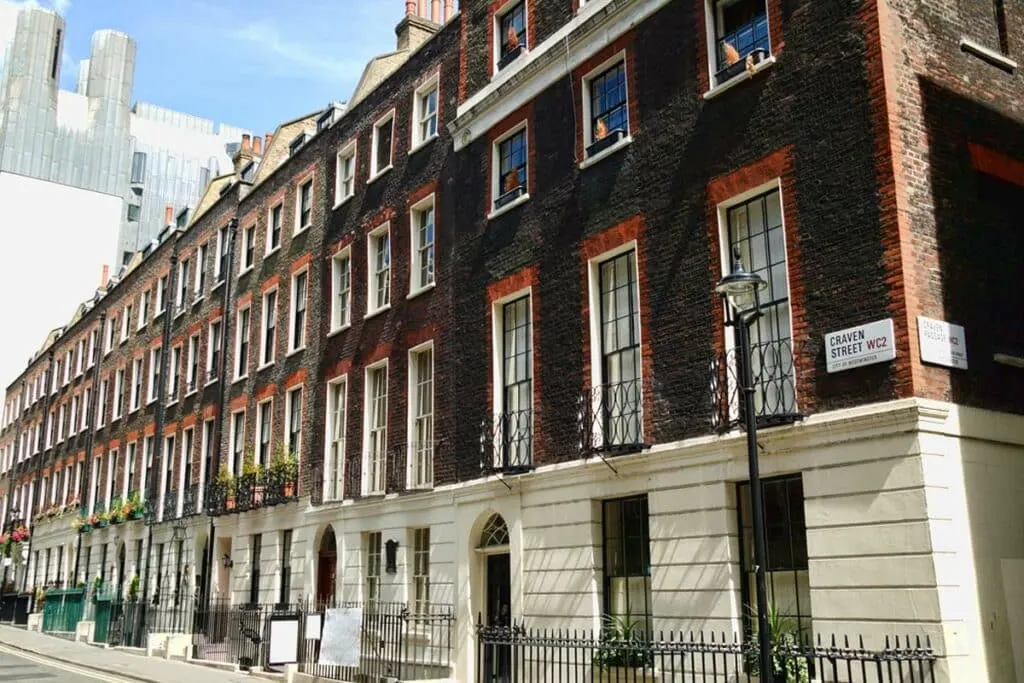
One of the USA’s founding fathers, Benjamin Franklin, lived in this tall Georgian mansion at 36 Craven Street between 1757 and 1775, just before he set off across the Atlantic to sign the Declaration of Independence.
This house, which displays typical tall Georgian windows with their pulley-operated openings and the semi-circular sunlight above the front door, was Franklin’s last-remaining residence in the world.
Early pioneer of haematology William Hewson was another resident of Craven Street, to which many attribute the grizzly discovery in 1994 of the remains of ten bodies underneath the house.
St Martin-in-the-Fields
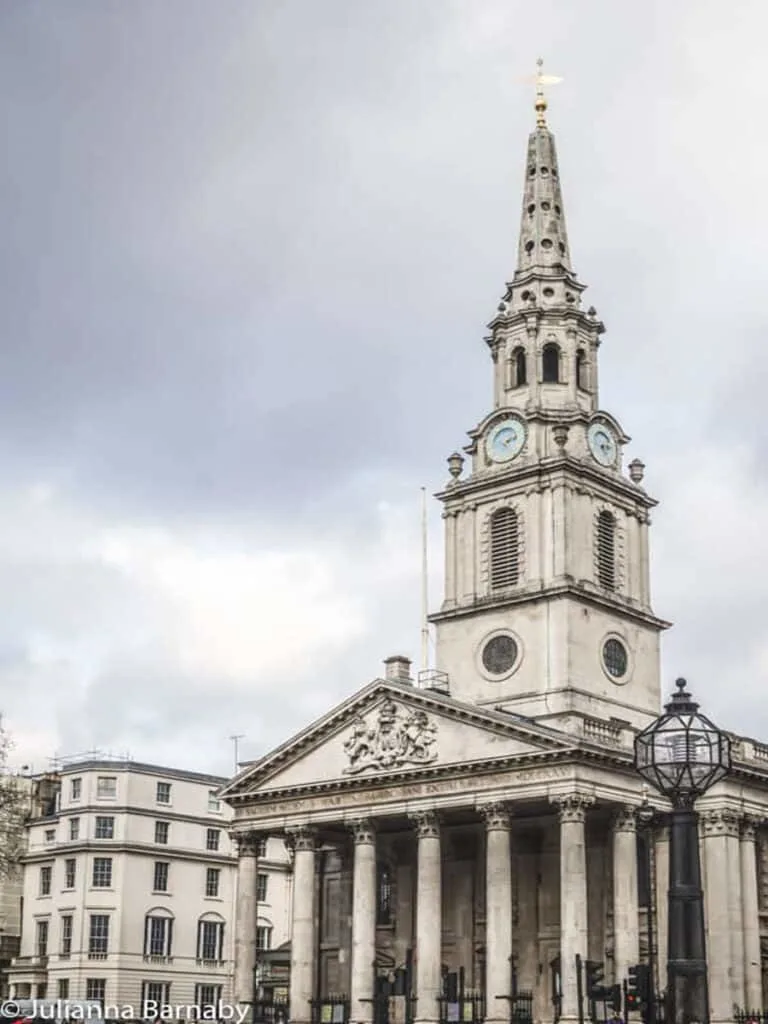
One of the finest examples of early Georgian architecture is on one corner of Trafalgar Square, where James Gibbs’ stunning St Martin-in-the-Fields church stands.
Built between 1722 and 1726, the beautiful neoclassical church is a distinctive blend of Baroque and Palladian styles. Its Roman-inspired columns protect the entrance and central tower steeples over nearby buildings.
The church became the template for many houses of worship that rose across the British empire.
Bedford Square
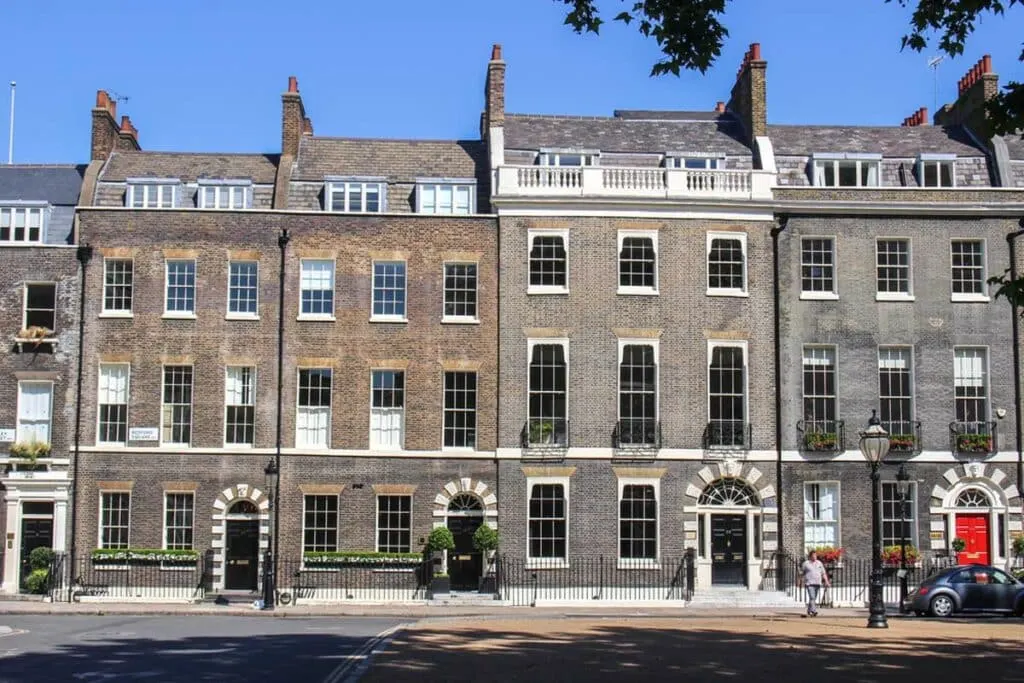
If you wander through Bloomsbury, finding a genuine leafy Georgian square surrounded by impressive rows of terraced townhouses won’t take long.
The best-kept example is Bedford Square, just west of the British Museum, where the brickwork and detailing on the rows of Georgian dwellings look as crisp and new as they would have done between 1776 and 1780 when they were built.
The beautiful brickwork around the front doors shows a development in style from the early Georgian era towards more opulent and elegant features.
However, the designs manage to remain quintessentially Georgian. Gas lamps synonymous with the period remain, as do the wrought iron railings and Georgian-style windows.
Brook Street
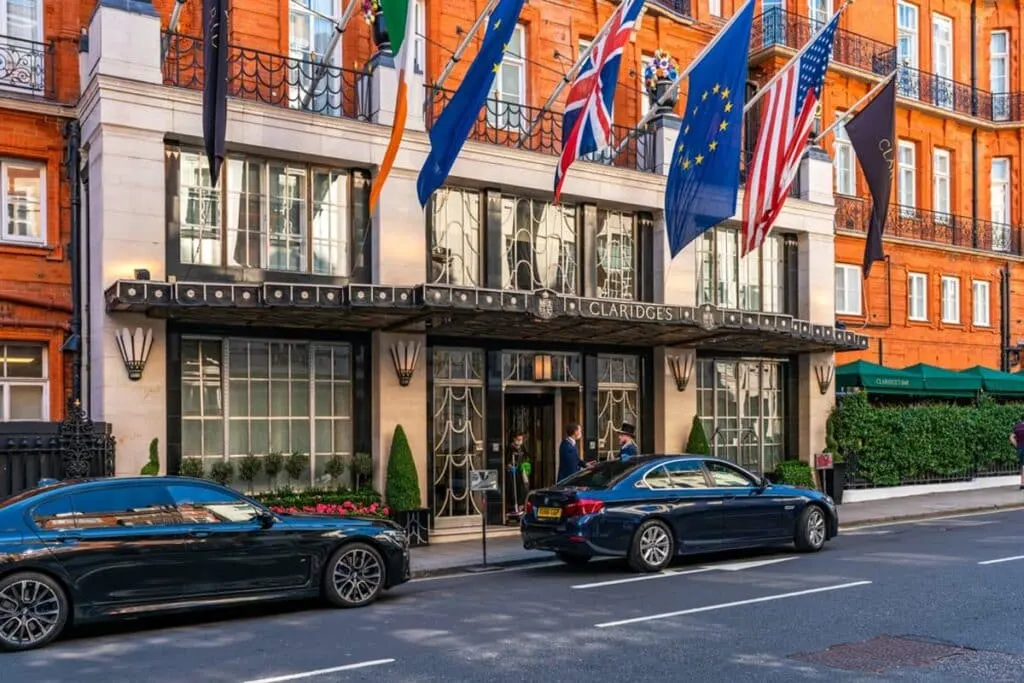
If it’s good enough for Handel and Hendrix, two of the finest musical minds in history, then it’s good enough for us!
The two geniuses were neighbours, with Handel living at number 25 and Hendrix at number 23, albeit not in the same era.
While this makes Brook Street, bang in the heart of Mayfair, a must-visit for anyone that likes to tick off blue plaques, it’s also a beautifully complete example of the contrast in early Georgian architecture.
The entire street was built between 1717 and 1726 with grand townhouses for the likes of William Pitt at one end and terraces for those of more modest means, such as Handel, at the Hanover Square end. The contrast in styles is still evident today.
Brook Street is also famed for taking its name from the Tyburn River that runs beneath.
Fournier Street
Spitalfields
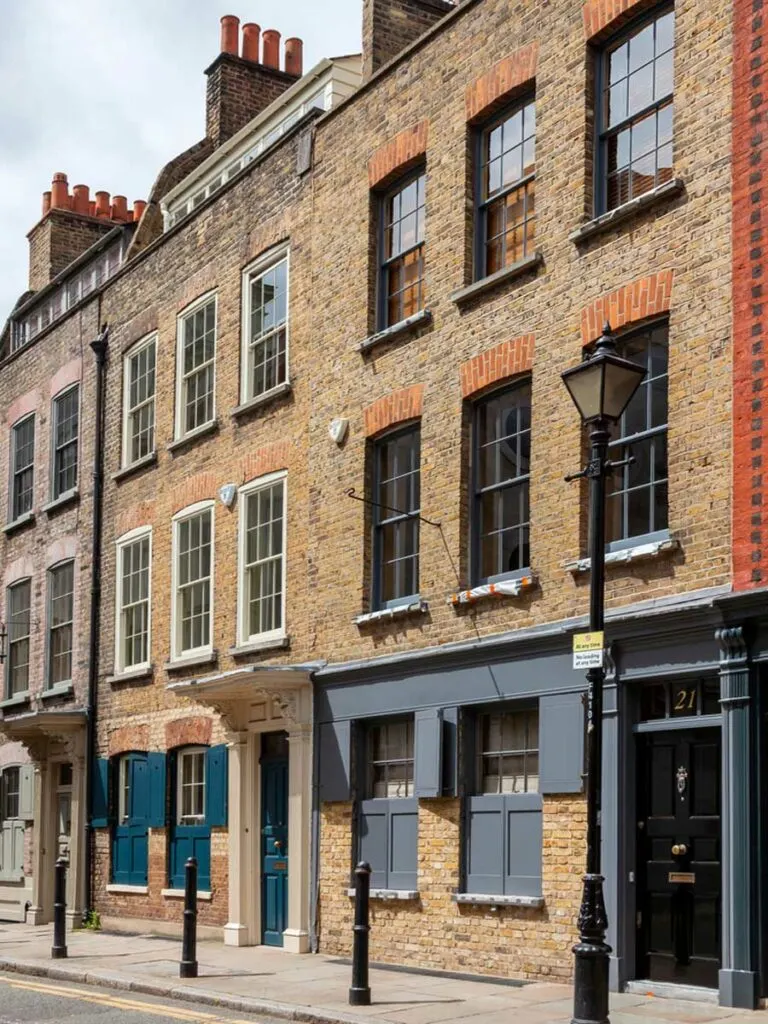
We return to Spitalfields for this entry, with the wonderful Fournier Street providing arguably the most extensive collection of terraced houses from the early Georgian era.
Situated very close to Denis Severs’ House, these stunningly preserved buildings are now part of a conservation area to maintain them in their original manner as far as possible.
The house’s high ceilings made them the perfect workshops and warehouses for the Huguenot silk weavers they housed, who were predominantly Protestant refugees fleeing from France.
The houses all show off the small brickwork of the Georgian era, gas lanterns on the street, and windows over the front doors.
The Lamb and Flag
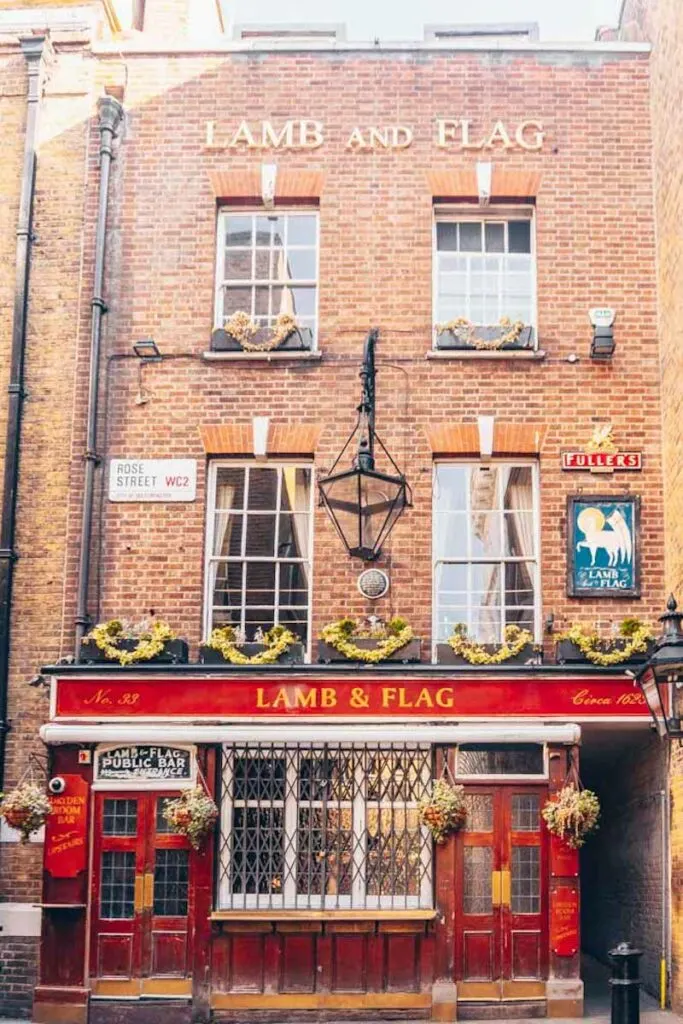
Covent Garden is another brilliant area that shows off contrasting Georgian architectural styles and how different social classes mixed within the same area.
During the Georgian era, Covent Garden was an entertainment hub as it is now. Pubs, theatres and brothels (admittedly, the latter is less prominent these days!) competed for custom, and the Lamb and Flag, now a Fuller’s pub, was established in 1772.
At one stage, the pub became known as the Bucket of Blood due to the amount of bare-knuckle boxing that went on there, and the pub remains a superb example of a genuine Georgian inn from the era.
Rules Restaurant
Covent Garden
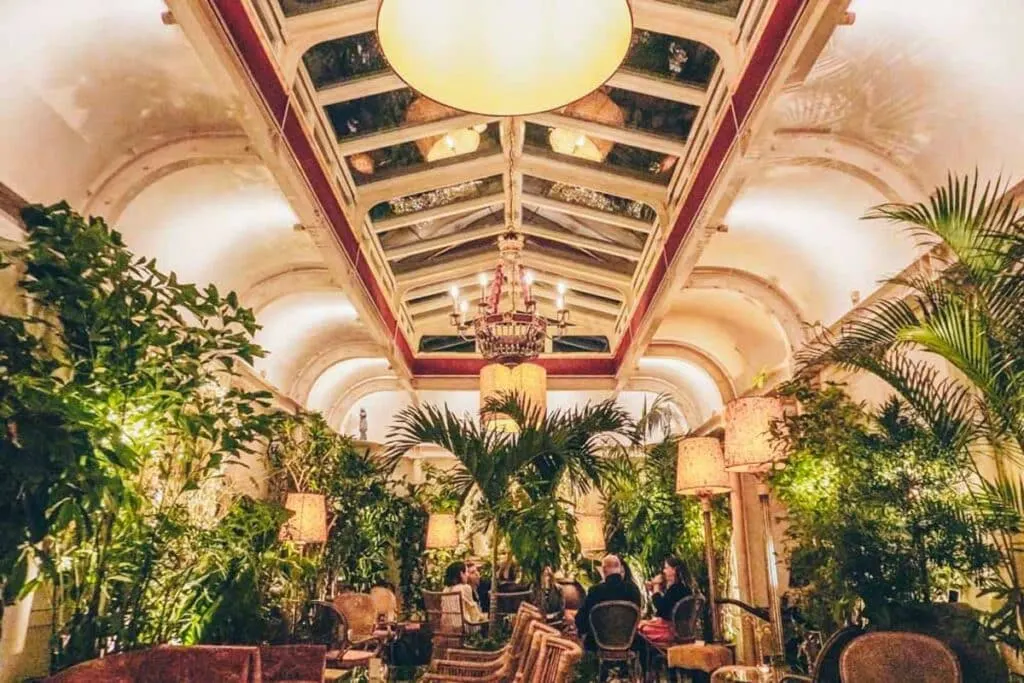
Just around the corner from The Lamb and Flag, in 1798, Rules restaurant opened, serving pies and oysters to the liberal elite of the day.
Now the oldest restaurant in London, the building is similar in style to the Lamb and Flag, albeit with a grander look and feel.
Psst… Head to Upstairs at Rules – it’s one of our favourite drinking dens in the city. Plus, there’s no better way to admire a Georgian building than to sit inside it with a cocktail in hand, right?

